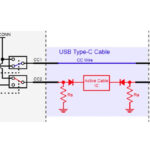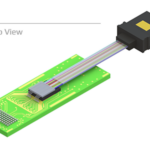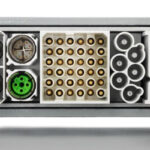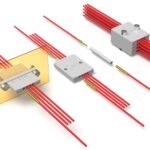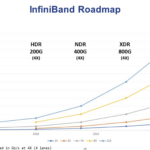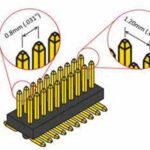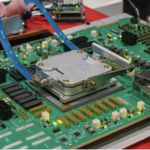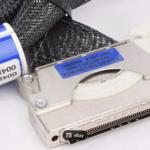Millimeter-wave signals used in 5G networks provide wide bandwidth and high data rates. Signal losses, both over the air and through interconnects, bring design challenges. by Ketan Thakkar, Cinch Connectivity Millimeter wave (mmWave) signals offer engineers countless application possibilities, including ranging, object detection, and mapping. Unfortunately, mmWaves bring numerous design challenges. Not only do mmWave […]
Basics
USB proliferation of capabilities and compatibilities
USB4 represents a significant change from past standards from the USB Implementers Forum (USB-IF). It is based on the Thunderbolt 3 protocol. Support of Thunderbolt 3 interoperability is required on all ports for USB4 docks, for downward-facing ports on hubs, and is optional for USB4 hosts and peripheral devices. Like Thunderbolt, USB4 allows tunneling of […]
How internal fiber-optic connector designs are advancing
Inside-the-box copper connector and cable IO-Link standards for data centers have been a significant focus of systems product development, particularly within consortia and industry standards groups. Some recent examples are internal 400G and 800G PECFF Top-of-Board, Ethernet, CXL, and the PCIe use of SFF TA 1002/1020 connectors. Other examples include twin-axial cables for memory, storage, […]
What’s a heavy-duty industrial connector?
A heavy-duty industrial connector (HDC) is a rectangular connector that can handle power, data, and signal pins in a single housing and operate in harsh environments. While there are also standardized circular industrial connectors, they are not classified as HDCs. HDCs are found in robotics, automation, machine control, power conversion, and motion control applications. This […]
USB Type C-standardization – what you need to know
In a world where technological advancements seem to occur at the speed of light, it’s imperative to stay informed and prepared for the next wave of innovation. The digital landscape is evolving, and at the forefront of this transformation is the imminent standardization of USB Type C in the European Union. This unassuming yet powerful […]
Cut splicing time with pins and housings
The Space Splice system from C&K/Littelfuse can reduce the time needed to build cable assemblies with crimps and connector housings. Building custom wiring harnesses is time-consuming, especially when you must splice wires and tie them together. The Space Splice series from C&K/Littelfuse can reduce assembly time in production. Instead of twisting and soldering wires, assemblers […]
Pluggable IO interface technology driving 224G PAM4 cable and connector developments
In this article, we’ll discuss the recent 200+G PAM4 per-lane interconnect developments supported by various consortia, standards bodies, and new product announcements. The latest 2023 Ethernet Alliance Roadmap shows the demand for 200+G per-lane pluggable modules, connectors, copper, and optical cable products by 2025. Based on their chart below and the interface roadmap, several different lane-count versions […]
Why is connector pitch important?
Contributed by Frances Richards Knowing the connector pitch is vital to ensuring compatibility with the wire or cable being connected. When designing a circuit or purchasing either connectors or cables, the connector pitch must be specified to ensure a proper connection. First, let’s define pitch: A connector’s pitch refers to the distance measured from the […]
How high pin-count socket connectors are supporting new processor-chip applications
Datacenter server processor chips have proven valuable as pluggable and removable devices for the socket connectors mounted to a server’s main PCB board. However, the number of contacts per socket connector has dramatically risen over the last few years. New chips offer 3000 to 5000 or more contact pads per flip chip. Typically, the socket […]
How the terabit class of pluggable cables and connectors is advancing
The world of gigabits began some 25 years ago, with a progression of interface lanes and links — from 100G and 200G to 400G and then 800G using IO standard and proprietary connectors and cables. Believe it or not, gigabit lanes were first used in 1999. Today, we’re entering the terabit phase with interface links […]


